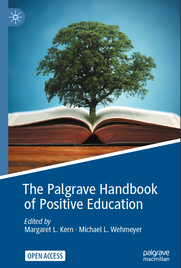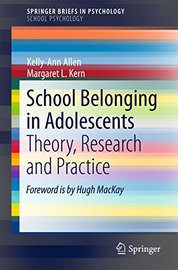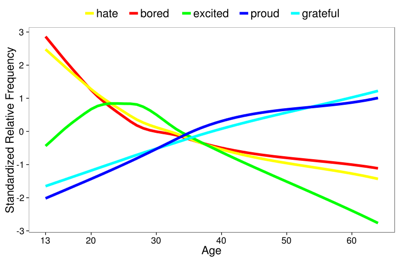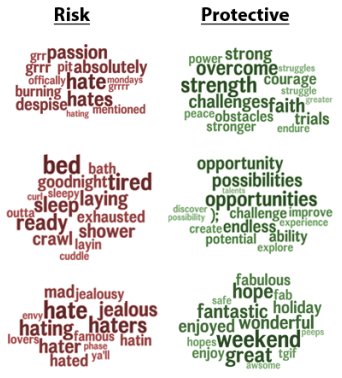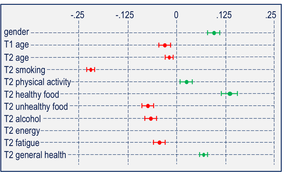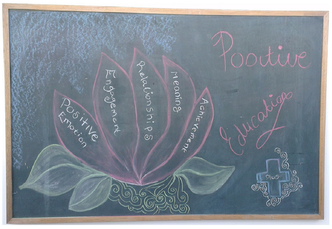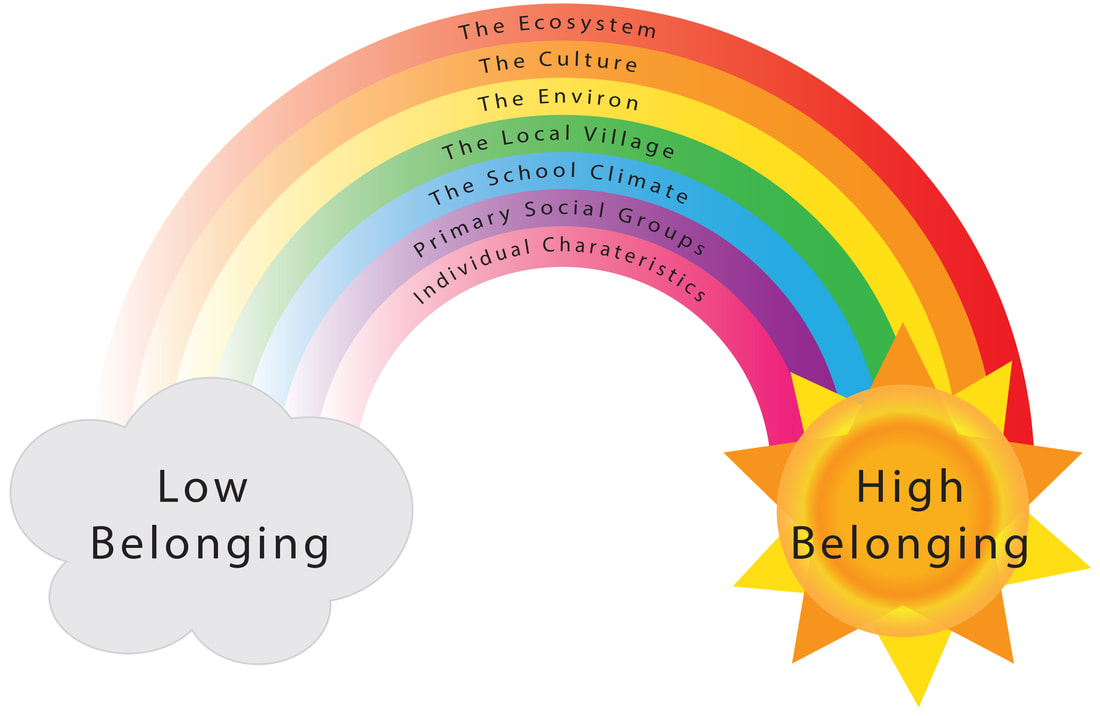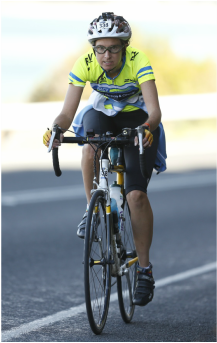My Research
My research addresses the question of who thrives in life, why, and what enhances or hinders healthy life trajectories. My research involves several related foci:
My research is constantly evolving. For more on my work to date, see my publications and presentation listings. Also check out my four books:
- understanding and measuring healthy functioning across the lifespan;
- identifying individual and social factors that impact life trajectories;
- developing positive educational communities; and
- systems based approaches to wellbeing.
My research is constantly evolving. For more on my work to date, see my publications and presentation listings. Also check out my four books:
|
This book is open access, which means that you have free and unlimited access. Provides a landmark introduction to the growing field of positive education. Includes a range of theoretical, applied, and practice-focused chapters attractive to academics and practitioners. Considers the implications of positive psychology research for public policy, curriculum, pedagogy, and teacher training.
Learn more |
In this book, we distil three decades of research findings from the field of Positive Psychology and provide practical ways to build your wellbeing through your everyday activities so you can feel good and do well at work.
Learn more |
|
In this book, we explore the concept of school belonging in adolescents from a socio-ecological perspective, acknowledging that young people are uniquely connected to a broad network of groups and systems within a school system, and consider practical ways that parents, educators, and schools can help support young people to connect and feel a part of the school.
Learn more |
In this book, we provide a user-friendly resource to help students develop a sense of school belonging. Across six modules, a mix of interactive and reflective activities aim to build social and emotional skills, identify strategies to cope with challenges, develop awareness of oneself and others, and empower young people to take control of their own wellbeing.
Learn more |
Understanding, Measuring, and Building Health & Wellbeing
One of my primary areas of research has focused on defining, measuring, and building well-being. Individuals, organizations, and leaders from around the world are turning their attention toward the potential value of assessing subjective well-being. Over five years ago, my colleagues and I developed measures of adolescent and adult flourishing (the EPOCH Measure of Adolescent Well-being; the PERMA-Profiler). These measures are freely available for research and non-commercial purposes (see my questionnaires for more details).
The PERMA-Profiler
|
Dr. Martin Seligman, one of the founders of the positive psychology field and one of my postdoc advisors at the University of Pennsylvania suggested that human flourishing is a multidimensional construct, captured by the acronym PERMA: positive emotion, engagement, relationship, meaning, and accomplishment (Seligman, 2011). Although the domains that comprise wellbeing are debatable, the key argument in this model is that well-being is not a single number indicating how happy a person is, but rather comprises multiple elements, such as finding meaning in life and having good social relationships. I like to add H (health) to the model, as physical health is a related, desirable outcome.
|
With Julie Butler, we developed a brief 23-item questionnaire to directly measure PERMAH. I subsequently have tested and refined the measure over time, and it has been translated into multiple languages (including Spanish, Chinese, Japanese, Korean, Dutch, Polish, Turkish, Italian, Portuguese, and Czech). For a talk that I presented on the measure (February, 2014, SAHMRI Research Institute, Adelaide, Australia), see this YouTube video. The English version of the measure is freely available for research purposes and non-commercial use (see my Questionnaires page).
The EPOCH Measure of Adolescent Well-beingAdolescence is a very important, though often overlooked, period of life. Building upon the PERMA model, and in collaboration with Dr. Larry Steinberg at Temple University, we developed the EPOCH Measure of Adolescent Well-being. The measure assesses five positive characteristics (engagement, perseverance, connectedness, optimism, happiness) that relate to good health, well-being, and other positive outcomes throughout life. The measure is freely available for research purposes and non-commercial use (see my Questionnaires page).
|
Workplace Well-beingThe PERMA-Profiler was developed as a general measure of well-being. I developed a modified version of the measure, which shifts the context to the work setting. Thanks to my colleague Dr Michelle McQuaid, you can complete the survey, get your profile, and learn specific strategies to improve your wellbeing.
The measure has been translated into several languages, and studies have demonstrated the value of the measure in the workplace. For instance, in this report, we point to insights that arise for Australian workplaces as we measure different aspects of workplace wellbeing. |
The measure provides a starting point, but over the past few years we have been working on refining the measure. Several of my ongoing studies are testing how to effectively use the measure to measure and build employee well-being and company performance.
The original version is freely available for research purposes and non-commercial use (see my Questionnaires page), and modified versions are accessible through Michelle, who can also arrange a specific url for your group or organisation, allowing individuals to get a personalised report, while providing leaders a grouped report (see the permah website for details - click on the link "for organisations" or contact Michelle directly).
The original version is freely available for research purposes and non-commercial use (see my Questionnaires page), and modified versions are accessible through Michelle, who can also arrange a specific url for your group or organisation, allowing individuals to get a personalised report, while providing leaders a grouped report (see the permah website for details - click on the link "for organisations" or contact Michelle directly).
Using Social Media in Social Science Research
While I was at the University of Pennsylvania, we developed a method that combines big data available through online social media, analytics available from computer science, and theories from psychology to unobtrusively measure and study psychosocial characteristics using online social media such as Facebook and Twitter.
|
As one of the psychologist on the team, I found that computer science has tools to analyze the growing amount of data available, and social scientists have insights to actually make sense of the information. By combining techniques from computer science with psychological theories, we can investigate the human psyche in an increasingly technologically driven world.
In a first study (Kern et al., 2014, Assessment), I used our open vocabulary approach to identify and visually summarize the dominant naturally occurring words and phrases that most distinguished each Big Five personality trait. The results really blew me away. Distinguishing words and phrases were face valid and provided insight into processes that underlie the Big Five traits. For example, the word clouds to the left show words that distinguished people high on extraversion (top) and high on neuroticism (bottom; this is the PG rated version) |
|
In a second study, I examined age-related differences in language use, and illustrated how the method could be used to test developmental theories (Kern et al., 2014, Developmental Psychology). As part of our approach, we can automatically create categories or topics. In the images below, the middle cloud are words distinguishing teenagers (age 13-18; top) and young adults (age 23-29; bottom), and the surrounding clouds are topics distinguishing each group.
We can also trace words across different ages (below). |
|
Our work has explored various possibilities. For example, we were able to predict atherosclerotic heart disease mortality better than 10 common predictors, such as gender, socioeconomic status, and health behaviors (Eichstaedt, Schwartz, Kern, et al., 2015, Psychological Science). The image to the right illustrates risky (left) and protective (right) topics of words (again, these are the PG rated versions). Hostile and apathetic words predicted risk, whereas positive experiences related to lower risk.
For details on the project, see wwbp.org. And for all sorts of computational social science resources, check out the resources page. |
While our original WWBP group at the University of Pennsylvania continues to collaborate on some projects, as we have spread out across the world, we are extending computational social science in different areas.
|
For instance, in collaboration with colleagues at the University of New South Wales and University of Technology Sydney, we found that different professions attract people with very different psychological characteristics, and that human beings are more inclined towards certain professions rather than others (Kern et al., 2019, Proceedings of the National Academy of Science, see also an article we published in The Conversation).
I am also exploring how we can apply the computational techniques to different types of qualitative data. |
Some of my work has also examined the positive and negative impacts of social media on different individuals. For instance, in a systematic review with colleagues at Monash University (Seabrook, Kern, & Rickard, 2016, JMIR Mental Health), we found that the impact of social media depends more on how a person uses it (for more details, see articles I published in The Conversation and Pursuit).
Long Data Approaches to Understanding Life Trajectories
|
An important question is how physical, mental, and social well-being unfolds over time. That is, what is a healthy life trajectory, and how is that influenced by individual characteristics and social contexts? Where as big data looks at a little information on a lot of people, long data involves extensive information collected on a small group of people over long time periods. My studies have demonstrated that understanding individual trajectories within the context of personality, past experiences, current situations, and future expectations is imperative. To help individuals thrive, we need clearly specified theories of predictors, mechanisms, and outcomes. This approach ensures that resources are spent on the areas that will be most effective in cultivating valued outcomes. Along these lines, my colleague Dr. Howard S. Friedman and I published a foundational article in Annual Review of Psychology, and through various collaborations, my work continues to grow in this domain.
|
The Terman Life Cycle StudyMy graduate work focused on understanding and predicting healthy aging and mortality risk. Much of my work used a rather unique lifespan dataset: The Terman Life Cycle Study. The study was begun in 1921-22 by Lewis M. Terman at Stanford University as a descriptive study of gifted children. Over 1,500 participants were followed prospectively throughout their lives, completing assessments every five to ten years. We collected death information for most of the participants and developed various psychosocial measures, including child and adult personality, physical activity, healthy aging, and social support. As part of my dissertation, I spent quite a bit of time at the archives collecting data (see pictures from the archives to the left, including ancient file cabinets in an attic that hold materials dating back to the early 1920s (top), and Terman's bust (bottom), which one of the more artistic participants created). My PhD advisor, Dr. Howard S. Friedman, and colleague Dr. Leslie R. Martin, published a book, The Longevity Project, which describes what we have learned about longevity through the project - I highly recommend it (see Dr. Friedman’s website for more information). Several of the chapters are based on my work. See my publications for articles I have written using this unique dataset.
|
The Harvard Grant Men StudyAnother amazing longitudinal dataset is the Harvard Grant Study, which began in the 1940s. Men in the 1939-1944 classes at Harvard University first completed an assessment, and then were followed throughout their lives, with numerous measures including self-report questionnaires, in-depth medical and psychiatric interviews, and more. Many of the findings in the Terman and Grant studies support each other. George Vaillant, who has worked with the sample over the past 40+ years, recently published an excellent book on the sample. I am fortunate enough to have had the opportunity to work with Dr. Vaillant, continuing to study and learn from this amazing group of men. In a project funded by the Templeton Foundation, we examined prospective beliefs in the afterlife, which resulted in the book, Heaven on My Mind.
|
|
|
Integrative Data AnalysisTaking longitudinal data further, I've explored innovative methods for combining studies. By taking advantage of existing studies, we can understand how people are traveling in life, and better determine the best points and avenues of intervention. Although it is extremely challenging to work with multiple datasets, by incorporating multiple studies, cohort and study specific effects can be tested, and replicable effects can be distilled. In turn, by approaching existing data with more complex theoretical models, we will better understand factors supporting or changing healthy trajectories, and subsequently improve our measures and intervention strategies.
In collaboration with Sarah Hampson, Lew Goldberg, and Grant Edmonds at the Oregon Research Institute, we integrated data from the Terman Life Cycle Study with the Hawaii Personality and Health Study (Kern, Hampson, Goldberg, & Friedman, 2014, Developmental Psychology). Building from this work, we developed TADPOHLS: The Anatomy of Developmental Predictors of Healthy Lives Study, which is a database that categorizes items from longitudinal studies that followed participants from adolescents into adulthood and included measures of psychological well-being, physical health, and psychosocial variables. We developed an extensive classification system, and coded information from 25 different studies. A paper on the database was published in Applied Developmental Science. |
Positive Education
Applying my background in positive psychology, skills in research and methodology, and work with teachers and schools, my research is increasingly focusing on how we can affect positive change within educational communities - an area that has been called "positive education".
There are various definitions and perspectives of positive education, but I use it as an umbrella term to refer to various positive approaches to development within schools, including social and emotional learning, positive youth development, trauma informed approaches, and character development. At its core, positive education focuses on characteristics of the student that go beyond academic performance and intelligence, such as social skills, the ability to regulate emotions, personality, and other characteristics that make us human. Importantly, positive education is not just about students, but about the educational community as a whole. Positive education aims to develop and support educational communities where each person can thrive, both individually and as a community.
Bringing together major work in the field, in 2021 I co-edited the Palgrave Handbook of Positive Education, a freely available handbook with insightful chapters from educators, researchers, and practitioners within positive education and related ares. Importantly, the handbook is freely available, so if you are interested in positive education, definitely check it out.
I founded the International Positive Psychology Association's Education Division, and I lead the Professional Certificate in Positive Education at the University of Melbourne. In 2017, I had the opportunity to contribute to a report on the current state of positive education for the World Government Summit. With my colleague Mike Weyhemer, we are currently developing an edited textbook on Positive Education, with contributors from around the world.
There are various definitions and perspectives of positive education, but I use it as an umbrella term to refer to various positive approaches to development within schools, including social and emotional learning, positive youth development, trauma informed approaches, and character development. At its core, positive education focuses on characteristics of the student that go beyond academic performance and intelligence, such as social skills, the ability to regulate emotions, personality, and other characteristics that make us human. Importantly, positive education is not just about students, but about the educational community as a whole. Positive education aims to develop and support educational communities where each person can thrive, both individually and as a community.
Bringing together major work in the field, in 2021 I co-edited the Palgrave Handbook of Positive Education, a freely available handbook with insightful chapters from educators, researchers, and practitioners within positive education and related ares. Importantly, the handbook is freely available, so if you are interested in positive education, definitely check it out.
I founded the International Positive Psychology Association's Education Division, and I lead the Professional Certificate in Positive Education at the University of Melbourne. In 2017, I had the opportunity to contribute to a report on the current state of positive education for the World Government Summit. With my colleague Mike Weyhemer, we are currently developing an edited textbook on Positive Education, with contributors from around the world.
|
Through collaborators and students, I've had the opportunity to work on some fascinating projects applying positive education within schools. Much of my early work in the area focused on St Peter's College in Adelaide, as we studied the impact of a multi-year whole school approach to incorporating positive education across the school (much of which is described in this book, as well as various articles on my publications page).
|
|
In another project, we used a participatory action research approach to incorporating positive education within a public secondary school (Halliday et al., 2019, Educational Action Research). A group of students led the research design and implementation of positive education in the school. The approach helped the school better understand student wellbeing and what curricula and approaches would be most useful for students. The approach encouraged students to take ownership of the process. Using an implementation science framework, we identified that factors such as support by the organisation, input by various stakeholders, and the background of the provider all impacted upon program outcomes (Halliday et al., 2019, Contemporary School Psychology).
|
|
While some of my work considers positive education more globally, I've also focused on specific aspects that influence how students and staff function. With my colleague Dr Kelly Allen, we have found that a sense of school belonging is critical to both academic performance and well-being. Through our work, we developed the rainbow model of school belonging, which depicts the various factors that influence belonging – characteristics of the individual, primary social groups, the school and local community, and broader societal and environmental factors. Each of these areas play a role in helping students feel connected or disconnected to their school. Our two books (Allen & Kern, 2017; Allen & Kern 2019) describe the research and practical approaches to support belonging in young people.
|
Importantly, even as I work in the positive education area, I take a critical view of the field. There are a lot of misunderstandings, which can result in positive education being seen as a program or passing fad, rather than thinking about how to best support our schools. For instance, with my colleague Associate Professor Mathew White, we illustrate that despite good philosophical, psychological, social, cognitive, economic, and cultural reasons that positive education should be incorporated within schools, it must be studied, applied, and managed responsibly, as there is potential that attempts are ineffective or do harm (White & Kern, 2018; International Journal of Wellbeing).
I continue to work to help develop a critical approach to Positive Education worldwide. I founded the International Positive Psychology Association's Education Division, and I lead the Professional Certificate in Positive Education at the University of Melbourne. In 2017, I had the opportunity to contribute to a report on the current state of positive education for the World Government Summit. With my colleague Mike Wehmeyer, we are currently developing an edited textbook on Positive Education, with contributors from around the world.
I continue to work to help develop a critical approach to Positive Education worldwide. I founded the International Positive Psychology Association's Education Division, and I lead the Professional Certificate in Positive Education at the University of Melbourne. In 2017, I had the opportunity to contribute to a report on the current state of positive education for the World Government Summit. With my colleague Mike Wehmeyer, we are currently developing an edited textbook on Positive Education, with contributors from around the world.
Systems Informed Positive Psychology
My research is increasingly focusing on how we can affect positive change across entire communities, through an area that I have termed Systems Informed Positive Psychology (SIPP; Kern et al., 2020), with applications to education being Systems Informed Positive Education (SIPE; Kern & Taylor, 2021). This approach explicitly incorporates principles and concepts from the systems sciences into positive psychology theory, methodologies, practices, and discourse to optimise human social systems and the individuals within them. SIPP draws on the philosophical and historical roots of each field, with the added value of a century of scientific tools and methodologies for identifying, understanding, and approaching real world challenges. It is necessarily interdisciplinary in nature. The intention of research, study, and application is toward identifying and cultivating conditions throughout a human social system that allow the system to co-evolve toward a positive future. The combined perspective simultaneously aims to provide short-term fixes to create capacity, while developing long-term solutions with the intention of moving toward new, previously unimagined positive futures.
|
SIPP brings together the different streams of my research – a focus on thriving, the complexity apparent across the lifespan, the need for interdisciplinary perspectives, and the integration of practice and research. A challenge will be identifying and developing appropriate methodologies and providing opportunity for continued innovation. To address this, I have established an interdisciplinary team of researchers and practitioners, who are co-creating the underlying theory of SIPP, creating practical tools and workshops, and developing research proposals and funding applications, all under my leadership and guidance. In 2020, we published a foundational theoretical paper describing the need for and philosophies underlying SIPP (Kern et al., 2020, The Journal of Positive Psychology).
|
We subsequently extended this to education (i.e., SIPE; see Allison et al., 2020; Kern & Taylor, 2021). My team is currently working with several communities to bring SIPP to life (explore more here). I look forward to seeing how we can progress the field through this lens in the future.
Final Thoughts
|
I like to think of my research as a puzzle. I get involved in different projects, often moving in multiple directions at the same time. I apply different methods, address different research questions. Each project is a piece of the puzzle. Over time, the full picture of my research career will come together. By understanding what works, for whom, and why, interventions will be better informed and ultimately more effective. It's a journey - stay tuned to see where it leads.
I end with a final quote, by Benjamin Franklin: "Wish not so much to live long as to live well." Capturing the full extent of human experience, I'll add to that the serenity prayer: "God, grant me the serenity to accept the things I cannot change, courage to change the things I can, and wisdom to know the difference." My hope is that through my research, I can somehow help others to indeed live well, through whatever the journey of life brings. |
